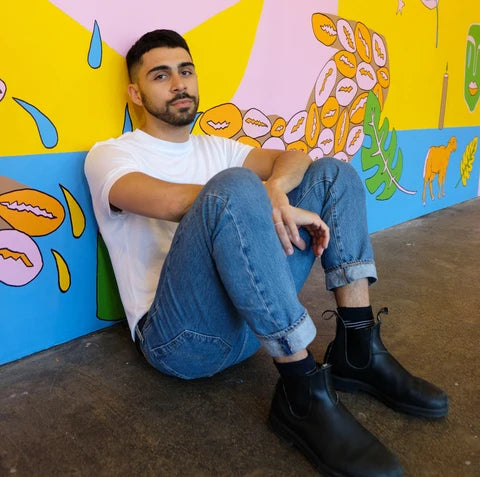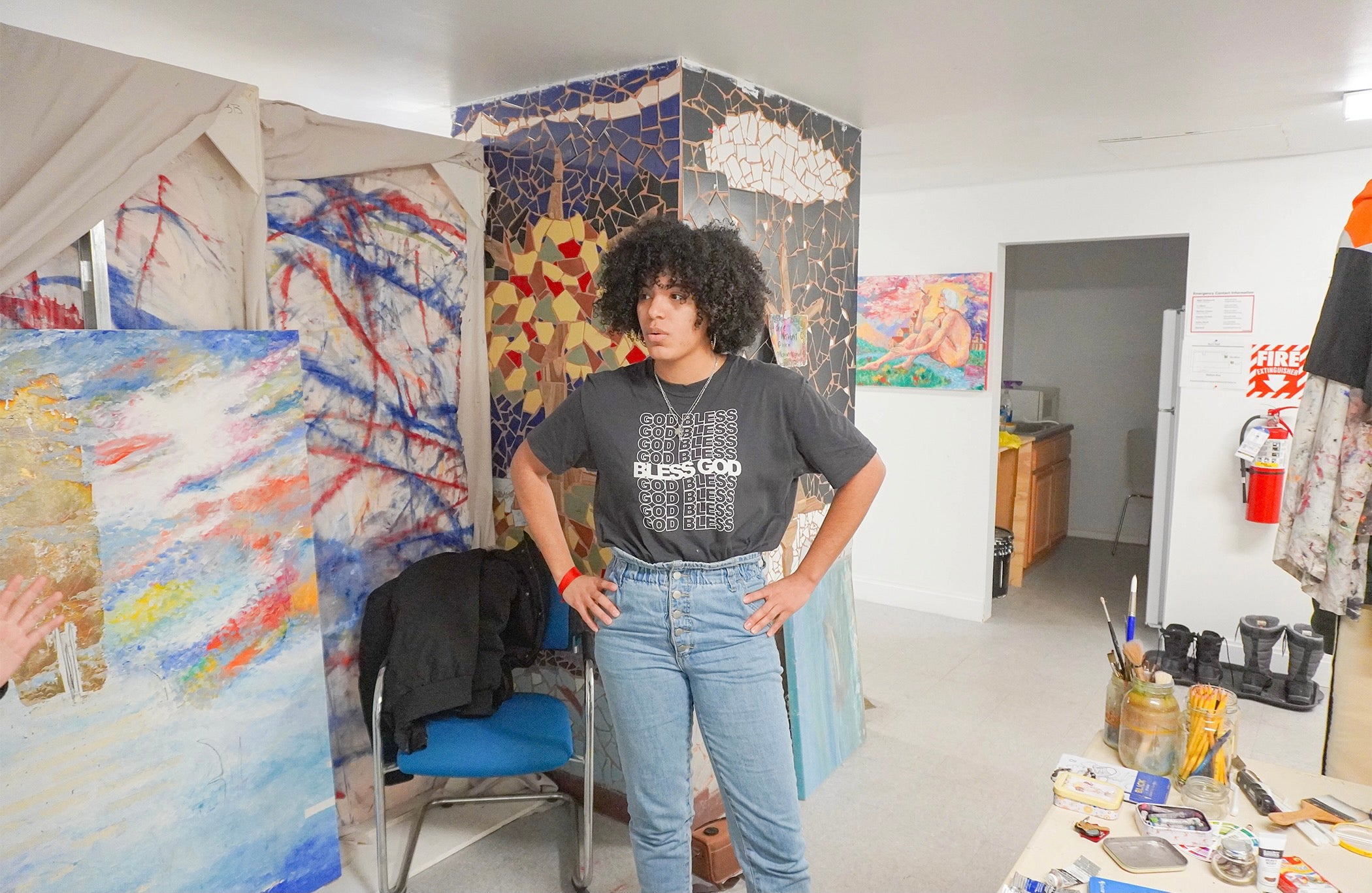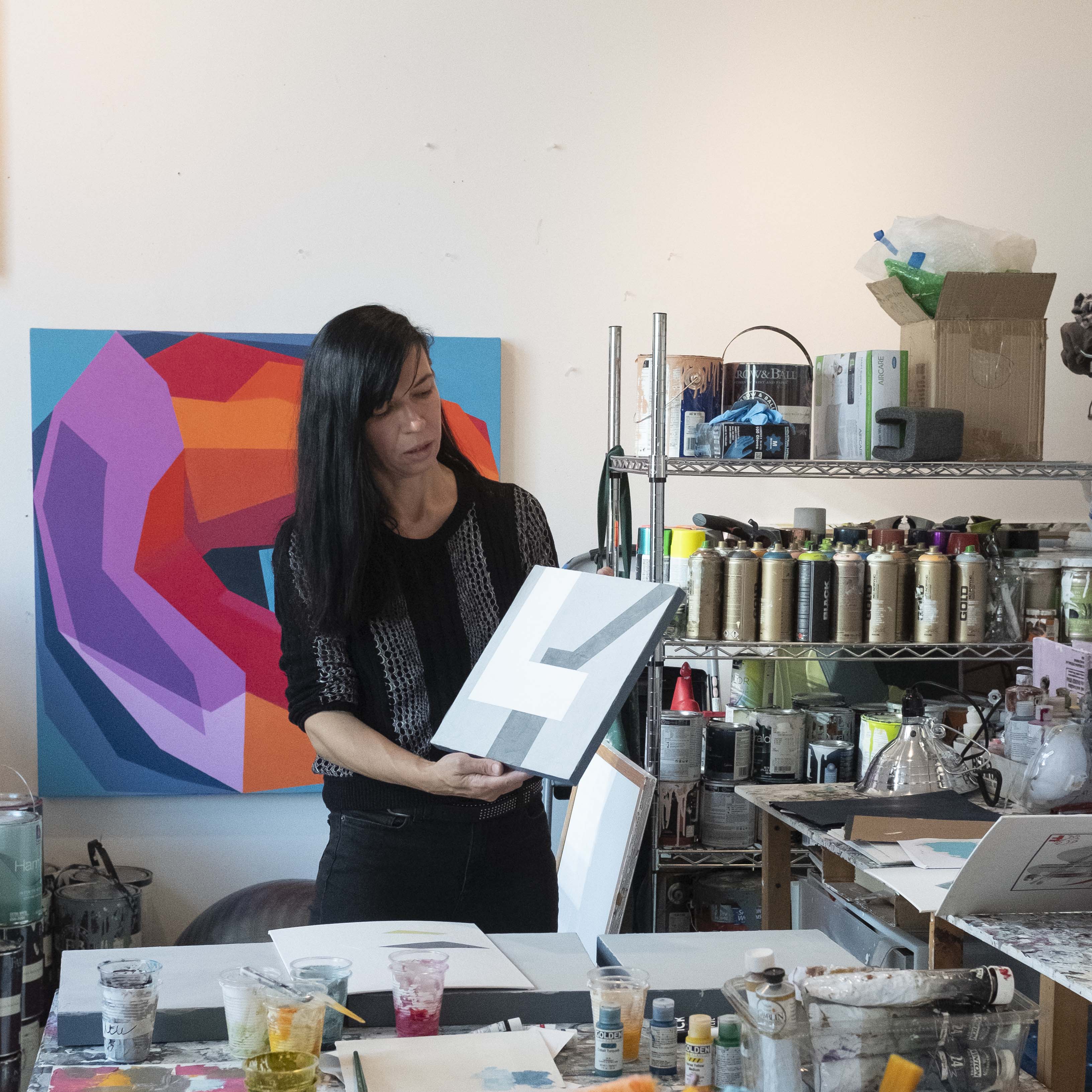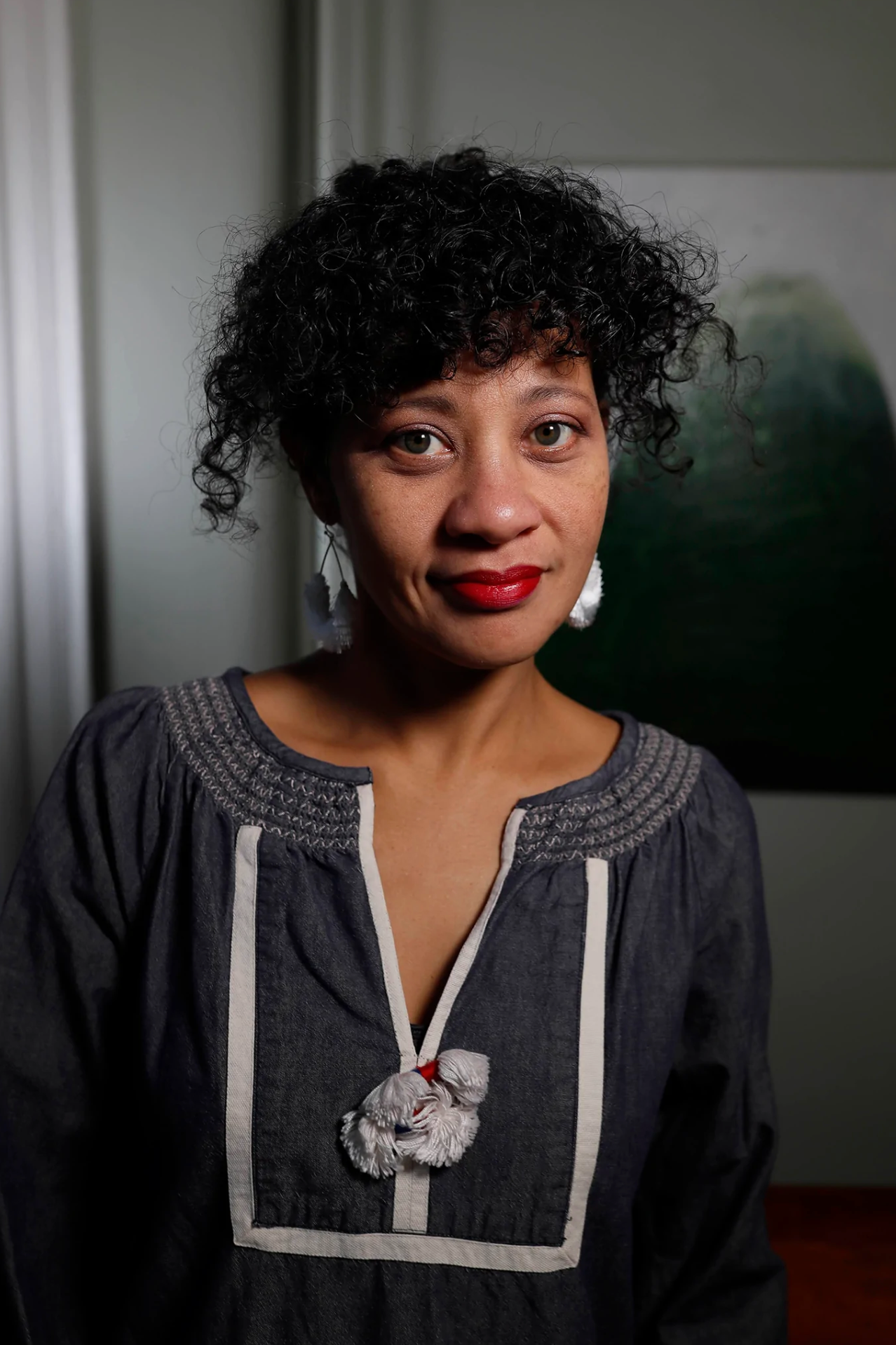No Products in the Cart
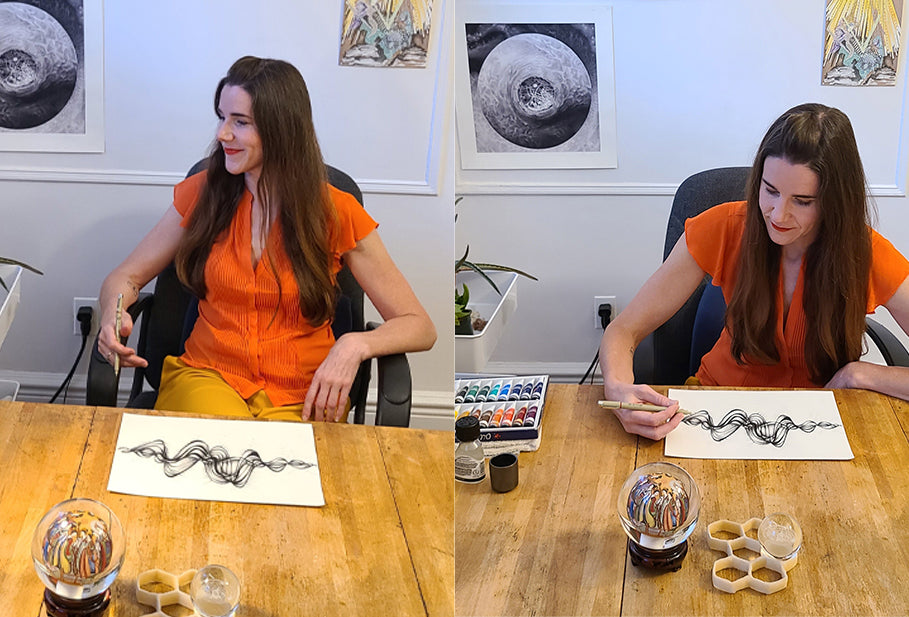
MEET KATIE NIEWODOWSKI

Q. What have you been up to recently?
(After the pandemic) I knew right away that I needed to make art. So I ordered some materials and started to make small drawings.
I also got involved in a couple projects born out of the pandemic - one to support the United States Postal Service. I did two mail-in art exhibits for which I made small pieces in collaboration with a friend of mine. It’s such a brilliant idea. It’s so fun to work on a piece somebody else started and come up with solutions for that.
Drawing Rooms put out a call for Prayers for the Pandemic inspired by the Tibetan prayer flag, but your own interpretation that would be hung somewhere people can see. I made art for that.

And I started doing this project doing portraits of individuals, particularly women, who have been killed in police custody or murdered by police, raising awareness for Black Lives Matter. So even though I haven’t been back in my studio, there's a lot of exciting energy in the art world right now. People coming up with ways to continue making art and to collaborate - collaborating has been my favorite part. Because it gives you a sense of connection.
Q. I guess that’s an advantage of you having already worked on a small scale, since they can reflect immediate responses whereas larger works tend to be premeditated!
I'm also wondering: What have you been reading/ watching / listening to?

I love to listen to audiobooks while I draw or paint, that’s my thing. Music is a bit more difficult to work to because I need the right energy and it takes too much time or is distracting if the song’s not right.
My brother’s a huge Stephen King fan, but I never read him because I had this idea of him as a writer that he’s too mainstream horror - which has proven to be totally wrong! My big pandemic book was The Stand, written in 1978. It’s a story of an entire country where a virus was released. The audiobook was 47 hours - I later listened to an interview between Terry Gross and Stephen King and he said he had listened to the Bible on audio and it was still less. But he’s an excellent writer, so much more character development than I expected. It’s creepy how many things he got right, because he thinks about details of how this thing would go down to sports not playing, masks, and all that.
The other one is Ninth Street Women, a book about women who were part of the Abstract Expressionist movement along with Jackson Pollock, Lee Krausner and the likes. It talks about seven different women during those times and outlines their stories.

Q. I see the motif of cells - and webs of cells - resonating across different series of works. Where does this come from?
When I was in 2002 my dad died of cancer, that became a huge inspiration for looking at the idea of the cell as full of life and having potential for expansion - like cell division where human beings are formed - but also metastasis that is destructive. I’ve been looking at the two parallels which expanded into what we think of as dichotomies such as life and death, seduction and repulsion, microcosm and macrocosm. They did this power-of-ten series where the most microscopic things look like the biggest things we can observe in the universe. That’s a very powerful, potent symbol to me.

My sculptures and installations were meditations on that. I also wanted to do 2D works, which have given me the ability to take one step further and think about the energy behind all these systems. I also teach yoga so I think about the energy in breathing in the body. I’ve done about 42 two-dimensional paintings for The Spheres Really Have Their Music.
Q. Am I correct in thinking the title The Spheres Really Have Their Music comes from the Pythagorean idea of celestial spheres moving in harmony to create a “symphony”?
Pythagoras and the idea of five equations and golden means - he discovered the idea of golden harmony which also shows up in our own bodies. This one equation is harmonic to us, a golden rectangle is pleasing to us because we are made up of that. It’s powerful to me that we’re all connected together by math. Although - if you told me in high school I’d be interested in math, I would have laughed!
Q. That discovery of universals beyond specifics is where I see you and Kati Vilim’s works coinciding.
I’ve never thought of that before! Now I’m going to think of her works in a different way.

Q. You did small soft sculptures that are often terrarium-like. What made you transition from these three-dimensional to recent two-dimensional versions?
It was a practical choice in terms of space. I recently moved to a space with more room to explore larger works - but still not enough to go sculptural. A lot of sculptural works were done when I had studio space, whereas now I have a live-work space. For a while I did just graphite drawings inspired by my earlier sculptures. Then I realized I could explore a whole new world by using color, which is where The Spheres series came from.
From time to time I still work with aggregates of smaller pieces. I did a Tectonic series which I completed fairly recently. The final installations are large, but building pieces were small enough that I could work at a table with.

Q. Were there any themes or inspirations that surfaced specifically because of the pandemic or more recently, Black Lives Matter?
The desire to work for my newest project, the miniature portrait series, came from the protests. I couldn’t engage in any of the protests because my mom is seventy-four years old and my brother down here is high risk as well. So I wanted to have my own visual way of responding.
I’ve done a couple of illustrations in response to COVID-19 nurses early on. I’ve been using materials small enough - I’ve always worked pretty small, but was planning to work bigger, which was put on hold.
My materials haven’t changed that much, but theme-wise there has been so much to respond to so I’ve been trying to work in the moment.
Q. What do you think of the role of art in understanding cultural experiences we are not directly part of?
It’s funny - I’m a visual artist but when you asked that question I immediately thought of authors like James Baldwin, or music. I think in these fields working among people of different genders, cultures, and backgrounds gives you a bridge.
Unfortunately visual art is slower to that in music, comedy, or other fields. That’s a problem. My partner is a Native American - Black woman who would come to openings and feel like “where are the Black people?” I think this moment is making us all realize that. Many websites I looked at were criticizing the way the Met is set up, for example - how it has one “indigenous” department no matter if the works are from Africa or the Pacific Islands. Same goes for MoMA that feels like one era of White male art. So it’s good to see websites and social media starting to turn attention to Black and LGBTQ artists.




